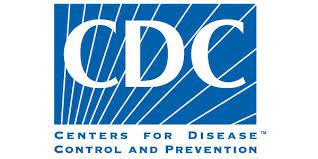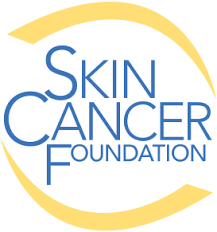Skin Cancer Prevention and Treatments
Skin Cancer
A Comprehensive Guide to Understanding, Prevention, and Treatment
Skin cancer is a condition in which cells in the skin grow uncontrollably, ultimately leading to the formation of tumors. It is the most common cancer in the United States, with some individuals being at a higher risk than others. In this article, we will explore the types of skin cancer, causes, risk factors, prevention strategies, and treatment options. Additionally, we will address ten frequently asked questions about skin cancer.
Understanding Skin Cancer
Skin cancer occurs when skin cells are damaged, primarily due to ultraviolet (UV) radiation from the sun or artificial sources such as tanning beds and sunlamps. The two most common types of skin cancer are basal cell carcinoma (BCC) and squamous cell carcinoma (SCC). Other forms include melanoma and Merkel cell carcinoma.
Causes and Risk Factors
The leading cause of skin cancer is overexposure to UV radiation. Otherfactors that can increase the risk of developing skin cancer include:
- Fair skin and light-colored eyes
- A history of sunburns
- Family history of skin cancer
- Weakened immune system
Prevention Strategies
To reduce the risk of developing skin cancer, consider the following tips:
- Apply sunscreen: Use a broad-spectrum sunscreen with an SPF of 30 or higher on all exposed skin, even on cloudy days.
- Seek shade: Avoid direct sunlight during peak UV hours, typically between 10 a.m. and 4 p.m.
- Wear protective clothing: Long-sleeved shirts, wide-brimmed hats, and sunglasses can help shield your skin from harmful UV rays.
- Avoid tanning beds and sunlamps: These artificial sources of UV radiation can significantly increase your risk of skin cancer.
Treatment Options
The treatment for skin cancer depends on the type, size, location, and stage of the cancer. Some common treatment options include:
- Surgery: Surgical removal of the cancerous tissue and surrounding skin.
- Mohs surgery: A specialized technique that removes cancerous tissue layer by layer, preserving healthy tissue.
- Cryotherapy: Freezing and destroying cancerous cells with liquid nitrogen.
- Radiation therapy: Using high-energy rays to destroy cancer cells.
- Chemotherapy: The use of drugs to kill cancer cells or stop them from growing.
- Immunotherapy: A treatment that stimulates the immune system to fight cancer cells.
The journey to a more confident you starts with one decision. That is the decision to get treated, why wait Book Online today? If you’re on the fence or have questions brewing, remember: We at Sullivan Dermatology are always here to help.
Videos
Skin Cancer
Skin cancer is a condition characterized by the abnormal growth of skin cells. It occurs when skin cells are damaged by the sun’s ultraviolet (UV) radiation or other factors, leading to uncontrolled cell growth. There are several types of skin cancer, including squamous cell carcinoma, basal cell carcinoma, and melanoma. It’s important to be aware of the signs, causes, and treatment options for each type to ensure early detection and effective treatment.
Squamous Cell Carcinoma: Symptoms, Causes, and Treatment
Squamous cell carcinoma (SCC) typically appears as a red, scaly patch or wart-like growth on the skin. It commonly occurs on sun-exposed areas such as the face, neck, ears, and hands. Other symptoms may include persistent sores or ulcers that fail to heal, and in some cases, SCC may spread to other parts of the body. Chronic exposure to UV radiation, fair skin, a weakened immune system, and a history of skin cancer are among the common risk factors for SCC.
Treatment options for SCC depend on the size, location, and stage of the cancer. They may include surgical excision, Mohs surgery, cryotherapy, radiation therapy, or topical medications.
Basal Cell Carcinoma: Symptoms, Causes, and Treatment
Basal cell carcinoma (BCC) is the most common type of skin cancer. It typically appears as a flesh-colored or pearly bump, often with visible blood vessels or a central depression. BCC tends to develop on areas exposed to the sun, such as the face, scalp, ears, and neck. Although it rarely spreads to other parts of the body, early detection and treatment are crucial to prevent damage to surrounding tissues.
Causes of BCC include prolonged sun exposure, a history of BCC or other types of skin cancer, fair skin, and certain genetic conditions. Treatment options for BCC include surgical excision, Mohs surgery, cryotherapy, topical medications, and photodynamic therapy.
Melanoma: Symptoms, Causes, and Treatment
Melanoma is a type of skin cancer that originates in the pigment-producing cells called melanocytes. It often appears as a new, unusual, or changing mole on the skin. Melanoma can develop on any area of the body, including areas not exposed to the sun. Common signs include asymmetrical moles, irregular borders, changes in color, and a diameter larger than a pencil eraser. It’s important to note that early detection and treatment are crucial for the successful management of melanoma.
The primary cause of melanoma is exposure to UV radiation, including sunlight and tanning beds. Other risk factors include fair skin, a history of sunburns, a family history of melanoma, and many moles on the body.
Treatment options for melanoma depend on the stage and location of the cancer. They may include surgical excision, lymph node biopsy, immunotherapy, targeted therapy, radiation therapy, or chemotherapy.
There are several myths surrounding skin cancer that need to be debunked. One common myth is that people with darker skin tones are not at risk for skin cancer. While it’s true that fair skin is more susceptible to UV damage, individuals with darker skin tones can still develop skin cancer and should take preventive measures and undergo regular skin checks.
Another myth is that wearing sunscreen alone is sufficient protection against skin cancer. While sunscreen is an essential part of sun protection, it should be used in conjunction with other protective measures, such as seeking shade, wearing protective clothing, and avoiding peak sun hours.
Treatment options for skin cancer vary depending on the type, stage, and location of the cancer. They may include surgical removal.
For More Information: Skin Cancer or Skin Cancer.
FAQs About Skin Cancer
Early signs may include new growths, changes in existing moles, or non-healing sores on the skin.
A doctor will perform a physical examination and may take a biopsy for further analysis.
If detected early, most skin cancers can be effectively treated and cured.
Skin cancer itself is not usually painful, but some treatments may cause discomfort.
The rate at which skin cancer spreads depends on the type and stage of the cancer.
While some skin cancers can be aggressive and life-threatening, most are not dangerous if detected and treated early.
The survival rate varies depending on the type and stage of skin cancer, with early detection being key to a favorable prognosis.
While not all cases of skin cancer can be prevented, reducing UV exposure and practicing sun safety can significantly lower your risk.
It is recommended to perform a self-examination of your skin once a month and to see a dermatologist for a professional skin check at least once a year.
Although less common, individuals with dark skin can still develop skin cancer. It is essential for everyone, regardless of skin tone, to practice sun safety and monitor their skin for changes.





